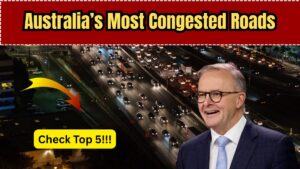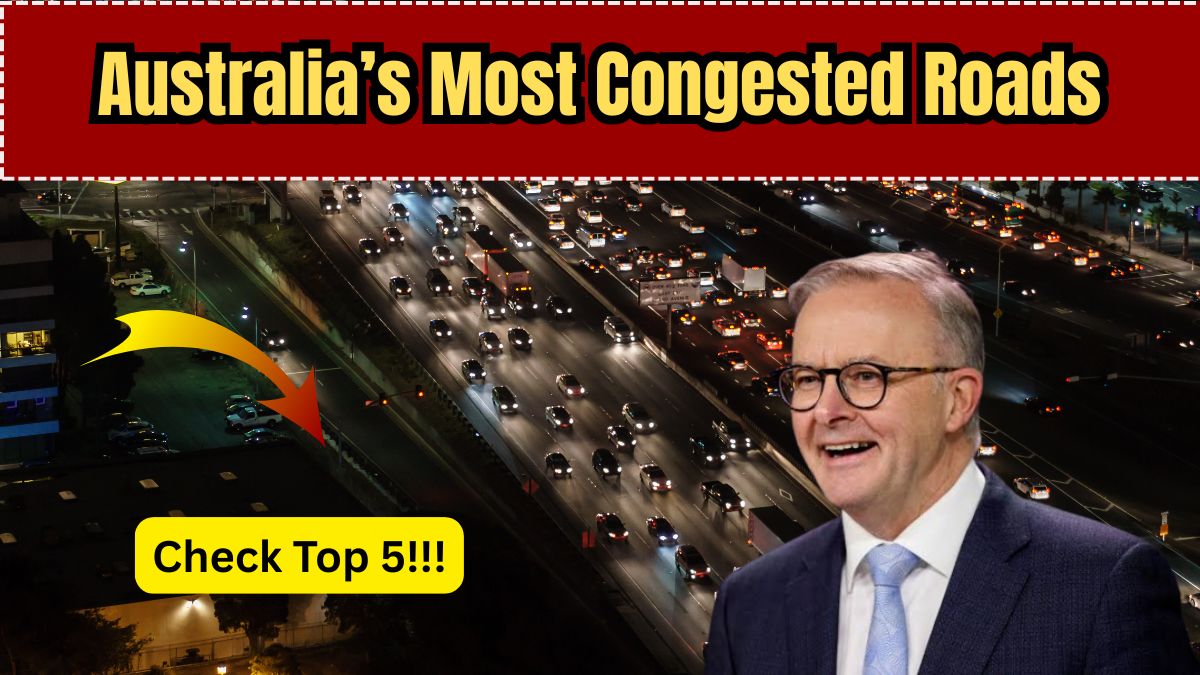If your daily commute feels slower than ever, you’re not alone. New data for 2025 reveals that traffic congestion in Australia has worsened in most major cities, driven by rising car ownership, population growth, infrastructure delays, and post-pandemic travel recovery. From Sydney to Perth, some roads are now seeing average speeds as low as 20 km/h during peak hours.
This article breaks down the worst traffic roads in Australia 2025, city by city, helping you identify hotspots to avoid—or prepare for—before your next drive.

Why Is Traffic So Bad in Australia in 2025?
Several key factors have contributed to worsening congestion this year:
-
Increased private vehicle usage due to unreliable public transport and flexible work policies.
-
Urban population growth, especially in fringe suburbs with limited public infrastructure.
-
Ongoing roadworks and major infrastructure projects, like the Sydney Metro and Melbourne’s North East Link.
-
Return to office mandates increasing weekday traffic volumes.
These elements combined have pushed commuting delays in 2025 to record highs, with drivers losing up to 120 hours per year in traffic in some cities.
Top 5 Worst Traffic Roads in Australia (2025)
Here are the most congested roads in the country, as reported by the Australian Automobile Association and TomTom Traffic Index:
1. Parramatta Road – Sydney, NSW
-
Peak Hour Speed: 22 km/h
-
Commute Delay: +38 minutes per trip
-
Why?: Constant construction, narrow lanes, and bottlenecks at intersections make this Sydney’s nightmare route.
2. Punt Road – Melbourne, VIC
-
Peak Hour Speed: 19 km/h
-
Commute Delay: +42 minutes
-
Why?: Despite years of promises, little has changed on this central artery. It’s regularly jammed in both directions.
3. Gympie Road – Brisbane, QLD
-
Peak Hour Speed: 25 km/h
-
Commute Delay: +35 minutes
-
Why?: One of Brisbane’s busiest roads, with minimal options for bypass. Congestion is worsening in 2025.
4. South Road – Adelaide, SA
-
Peak Hour Speed: 23 km/h
-
Commute Delay: +33 minutes
-
Why?: Although upgrades are planned, the ongoing North-South Corridor work is causing massive delays this year.
5. Tonkin Highway – Perth, WA
-
Peak Hour Speed: 28 km/h
-
Commute Delay: +30 minutes
-
Why?: Increased freight traffic and airport-bound vehicles make this route one of Perth’s slowest.
Commuting Delays by City in 2025
Here’s a quick look at city-wide average delays for peak travel periods:
| City | Average Delay Per Day | Worst Affected Road |
|---|---|---|
| Sydney | 52 minutes | Parramatta Road |
| Melbourne | 49 minutes | Punt Road |
| Brisbane | 44 minutes | Gympie Road |
| Adelaide | 39 minutes | South Road |
| Perth | 37 minutes | Tonkin Highway |
This paints a clear picture of how road congestion in Australia 2025 has become a national challenge, impacting productivity and quality of life.
How Traffic Is Impacting Australians in 2025
The worsening commuting delays in 2025 aren’t just an inconvenience—they’re having real effects on daily life:
-
Lost work hours: Employers are reporting decreased punctuality.
-
Increased fuel costs: Stop-start traffic is hitting the wallets of drivers hard.
-
Rising stress and fatigue: Commuters are citing mental health effects from long travel times.
-
Lower public transport use: Poor integration between train/bus systems and job hubs is pushing more people to drive.
What Cities Are Doing to Fix It
Local and federal governments are responding with infrastructure plans, but many won’t show results until 2026 or beyond:
-
Sydney: WestConnex and Metro West expansions
-
Melbourne: North East Link tunnel (opening delayed)
-
Brisbane: Brisbane Metro rapid transit (partially operational)
-
Perth: Tonkin Gap Project
-
Adelaide: North-South Corridor completion by 2027
While these projects are promising, short-term pain continues for most drivers.
Top Tips for Avoiding Traffic in 2025
If you’re commuting through one of the worst-affected roads, here are a few ways to reduce the stress:
-
Leave earlier or later to avoid peak hours
-
Use traffic apps like Waze or Google Maps to reroute dynamically
-
Explore park-and-ride facilities
-
Consider cycling or e-scooters for last-mile travel
-
Join carpooling groups or rideshares to reduce total vehicles on the road
Even a 15-minute adjustment to your routine can save hours across the week.
FAQs
Which is the worst traffic road in Australia in 2025?
According to congestion data, Parramatta Road in Sydney holds the title for worst traffic road in Australia in 2025, with delays of up to 38 minutes during peak hours.
Why is traffic worse in 2025 than previous years?
The 2025 congestion spike is due to increased car use, a rise in post-COVID commuting, slow infrastructure upgrades, and high urban population growth—all contributing to heavier traffic.
How much time do Australians lose in traffic each year?
Drivers in major cities like Sydney and Melbourne are losing up to 120 hours per year in traffic—equivalent to five full days stuck in a car.
Are there any new roads or infrastructure coming to help?
Yes. Projects like Melbourne’s North East Link, Sydney Metro expansions, and Brisbane Metro are in progress. However, most won’t ease congestion until 2026 or later.
Which apps are best for avoiding traffic jams?
Apps like Waze, Google Maps, and Apple Maps offer real-time traffic updates and alternate route suggestions—essential tools for navigating congested roads in 2025.
Conclusion
Whether you’re commuting for work, school, or errands, Australia’s road congestion in 2025 is becoming impossible to ignore. While relief may be on the horizon through infrastructure projects, today’s commuters need strategies to survive the current gridlock. Stay informed, adjust your travel times, and use smart tools to beat the jam—because the road ahead is still full of stops and starts.
Click here to know more.
